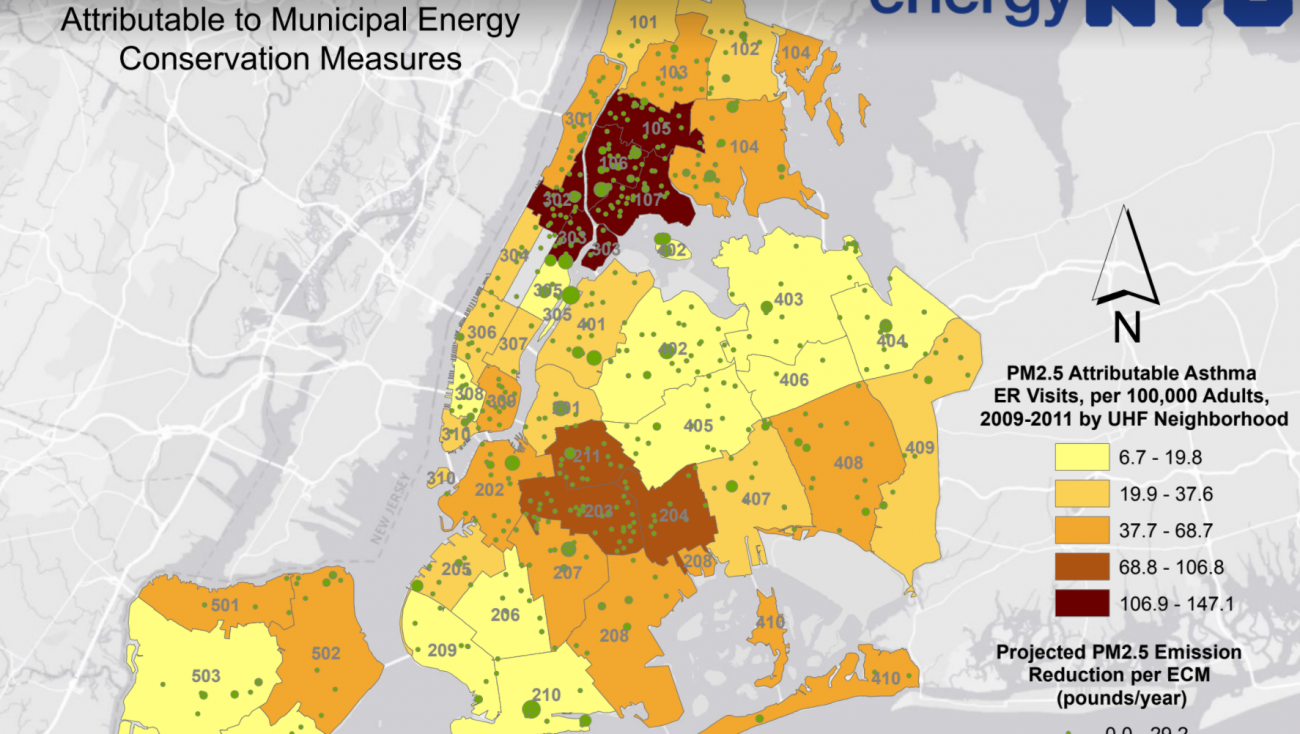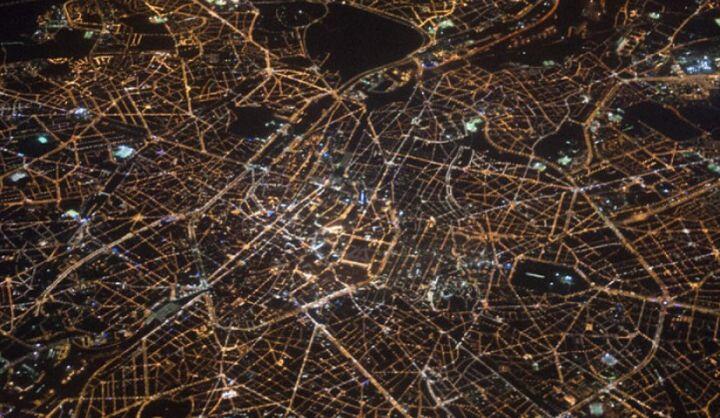- Map
- New York City
- NYC Department of Administrative Services

The map depicts the reduction of particulate matter 2.5 (PM2.5) emissions projected to occur as a result of completed and in progress municipal energy conservation measures across the five boroughs. The map overlays these projects over PM2.5 attributable emergency room visits (per 100,000 adults) by United Hospital Fund neighborhood. Energy conservation measures like steam trap replacement, steam system optimization, and boiler upgrades in public facilities are a critical component of New York City government's commitment to reduce greenhouse gas emissions 35% by 2025 and its strategy to reduce citywide utility expenses. However, this map illustrates a third public benefit. Across the city, the dollars spent to improve facility energy performance also work to reduce particulate matter 2.5 emissions, a significant environmental contributor to asthma conditions. By considering both energy and public health data, city government can achieve ancillary local environmental quality benefits in the most disadvantaged neighborhoods.
DATASETS
NYC Department of Citywide Administrative Services | Energy Management: List of completed and in progress energy conservation measures. Dataset includes projected annual reductions in energy consumption (KWH of electricity, Therms of Natural Gas, Gallons of fuel oil, etc.) and latitude and longitude coordinates. NYC Department of Health and Mental Hygiene: Emission factors for particulate matter 2.5 (PM2.5) in pounds per year. Factors provided by DOHMH staff. Applying these factors to the to the energy savings in the ECM dataset provides the projected PM2.5 reductions. NYC Department of Health and Mental Hygiene: PM2.5-attributable Asthma ER visits (rate per 100,000 adults 18 years and older) by United Hospital Fund neighborhood, 2009-2011. Dataset and UHF neighborhood shapefile pulled from the NYC Department of Health and Mental Hygiene Environment & Health Data Portal. (http://nyc.gov/health/tracking)
PARTNERS
NYC Department of Health and Mental Hygiene



